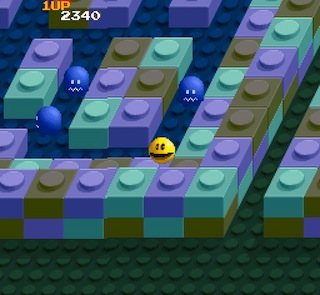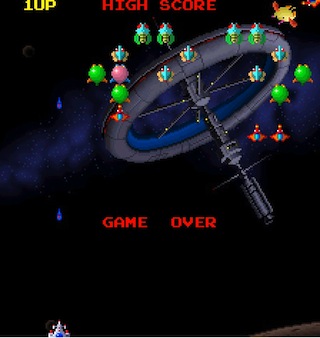
| Home | News | Demo Stuffs | Game Stuffs | Serious Stuffs | Travel Reports | Multimedia | Humour |
From a Sharp X68000 to the Atari Falcon!(Anima and his adventures!)
"Anima", who are you, and what are you doing with the corpse shell of this inactive Atari demo scener?
An obliging gentleman called 'Anima' on the Atari Forum board, once known as Percy of Light in a previous long ago Atari scene existence, put in a startling idea for a new project. As part of a more general investigation into software reverse engineering, he was considering decompiling the assembly code of Sharp X68000 games, in order to run them on suitable Atari systems. A tall order, you might think?
Well let's take a look at what he was proposing to take on.
Big in Japan?
Once upon a time in the mid 1980's, where the eastern sea was blue, the not at all unknown multi-billion dollar Sharp Corporation decided to create what was perhaps the ultimate attempt at making a computer around the Motorola 68000 CPU. My admittedly brief research has not found out why, but there was a rival offering from Fujitsu, the intel-based FM-Towns released at around the same time. Which might have had an influence perhaps?
The X68000 was a massive jump ahead of Sharp Corporation's somewhat average 8-bit products, and was sold at a not unexpected premium price of 3000 dollars in 1987 money. For that heavy outlay, the newly skint lucky owner got a lot in return.
The first model of the Sharp X68000 released in 1987 featured a clone of the MHz Motorola 68000 CPU running at 10 MHz (hence the name), 1 MB of RAM, and no hard drive. This compared quite respectably with the Atari STFM of the era with broadly similar specs (Comparison fanboys, I'll discuss the graphics and sound aspects shortly, then you can start sobbing properly!) The last model was released in 1993, with a 25 MHz Motorola 68030 CPU, 4 MB of RAM, and an optional 80MB SCSI hard drive. This compares very well with the Atari Falcon of that time.
Where the X68000 became really interesting, was with its custom graphics hardware, A series of screen modes going from 256 x 240 pixels, to 1024 x 1024 pixels were catered for. Even better, a maximum of 65536 colours on screen (at 512 x 512) was possible. To really rub in the fact that this was serious gaming hardware, a full house of 128 sprites at 16 x 16 pixels were included, with 32 sprites per scanline. Not forgetting hardware scrolling, multiple sprite palettes and more. The term 'arcade quality' can be used justifiably here, with one arcade game maker using the X68000 as a development system.
Sonically, it has a Yamaha YM chip! Only in this case, it's an 8-channel FM Synthesis YM 2151. There is the briefest of nods towards digital audio with a single 4 bit mono ADPCM channel.
RAM in these systems is expandable to a maximum of 12 MB, although it is commented that most games will not need anything like this amount.
Of absolutely no relevance to the remainder of this article but I'd thought I would mention it. The X68000 hosted a custom made GUI called Sx-Window, which is very much like the NeXT Step GUI in appearance.
We didn't get to see this one outside of Japan, not at least until it turned up years later as exotic 'collectible' hardware. I have seen the grand total of one of these machines in action, at a retro computing event earlier this year.
So you can see, this was going to be a tough one. Anima set himself with quite a challenge in porting anything made for the X68000 to the Atari Falcon.
Pacmania (Status: incomplete)
The first concrete result of Anima's initial dabbling in Atari-Forum derived from when Pacmania the STE remix was being discussed, For our enjoyment, he started to get the X68000 version of Pacmania to work on the Atari Falcon.
It can be described as incomplete but mostly there. The title and splash screens are only partially implemented. In game it looks better, but there is a little matter of visible food pills being needed. The look of the graphics is essentially arcade quality. Later test builds have been done in a variety of screen modes, up to and including something looking a lot like a full overscan. There are the welcome addition of the arcade sampled sound effects in there, the pill-eating 'blip' acts as an audio cue for finding the invisible pills.

This is pretty much arcade quality!
It can run on standard F030 with a minor slowdown in places where the ghost activity gets busier. This does not really affect the game play, so the verdict is 'good enough' going on for 'pretty good'. Acceleration can be very helpful here. My Centurbo 2 turned in a constant 50 fps smoothness (but needed a VGA monitor connected.) Bugs from the earliest versions include a disappearing Pacman and ghosts when traversing the very bottom part of the maze, otherwise this version is stable and keeps running. Later versions (with the sound) tend to lock up at a certain point near the bottom of the maze. There is a small issue with how Pacman is drawn in the maze, as he's not partially hidden by the walls when he should be, but that's a minor matter really.
As a first attempt, this looks very promising, not so much as a complete game, but definitely as a proof of concept. I hope Anima gets around to sorting this out properly, some day.
Galaga 88 (Status: Almost complete)
His next effort was for a game never seen before either on the ST or Falcon. Ladies and gentlemen, I give you Namco's Galaga 88!
This game proved to be very well suited to the Falcon 030. Anima managed to get quite a bit further, as this port is more complete, with all the gameplay elements in place, pretty much all the splash and game configuration screens in place. There is an attract mode too and we're only missing the sound.

This one definitely is!
This one plays very nicely on a standard Falcy with the possibility of a little slowdown on very busy sections, but this really doesn't rear its head much at all. It even handles the full screen vertical scrolling sections decently. A good joystick is recommended, preferably auto fire capable! The game normally displays in a borderless portrait mode, top and bottom borders removed. You can configure the screen mode, to get it to fit better on your specific display. You can choose the number of lives to start off with, continue mode or not, and even opt to begin with a 'double fighter' from the start. This time, you also get access to the high score table too.
Like Pacmana, Galaga 88 is very happy with acceleration and again flawless with the Centurbo 2. It does not seem to be quite so happy with a CT60 though.
Unlike Pacmania, which needs a bit more doing, Galaga 88, missing sound aside, is pretty much complete.
So what about the time between then and now?
Anima was chasing this topic most keenly in late 2012 through to the early part of 2013. At least one more candidate for porting had been mentioned, a platformer called 'Atomic Runner Chelnov', but nothing has been seen as yet and there's no recent activity on the forum from Anima.
When contacted about this by me, he confirmed that 'real life' issues were getting in the way, but more ports were planned, Some of these may well be on other hardware with similar capabilities to the X68000.
There is no timescale for this, I'm also keeping quiet about the nature of the hardware he's investigating in order to avoid possible future disappointment. I will give out one *tiny* spoiler though, it's not necessarily for anything that appeared in the home!
And with that, we close the saga of the X68000 Falcon, for the time being at least!
CiH - For Mag! - Oct 2013.